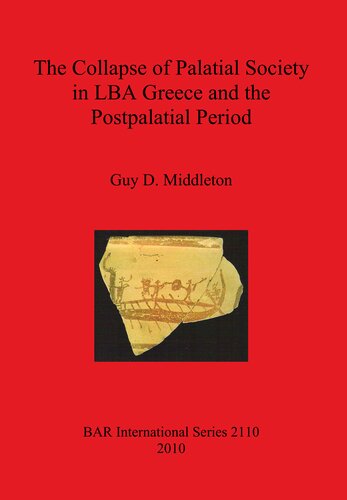

Most ebook files are in PDF format, so you can easily read them using various software such as Foxit Reader or directly on the Google Chrome browser.
Some ebook files are released by publishers in other formats such as .awz, .mobi, .epub, .fb2, etc. You may need to install specific software to read these formats on mobile/PC, such as Calibre.
Please read the tutorial at this link: https://ebookbell.com/faq
We offer FREE conversion to the popular formats you request; however, this may take some time. Therefore, right after payment, please email us, and we will try to provide the service as quickly as possible.
For some exceptional file formats or broken links (if any), please refrain from opening any disputes. Instead, email us first, and we will try to assist within a maximum of 6 hours.
EbookBell Team

4.8
64 reviewsThis monograph deals with the destruction and disappearance of the palaces and palace societies of Late Bronze Age or Mycenaean Greece c.1200 and aspects of continuity and change in the subsequent Postpalatial period of the twelfth and eleventh centuries (LHIIIC). It is primarily concerned with mainland Greece and the islands, excluding Crete. An emphasis in this work, where analysis of the Greek material itself or theories based upon it is attempted, is the potential for differences between palatial and non-palatial areas. In order to set in context the discussion of collapse and of Postpalatial society, Chapter 1 is a brief introduction to Mycenaean material culture and interpretations of Mycenaean society. A limited survey is also offered, in order to clarify the extent and chronology of the collapse. Chapter 2 reviews developments in general collapse theory as drawn from recent and major publications. It further examines recent discussion of specific examples of collapse to identify current trends in interpretation. Chapter 3 critically examines theories of the Mycenaean collapse, concentrating on major styles of interpretation and ending in a discussion of the present consensus. Chapter 4 uses recent discussions of the Hittite, Maya and Roman collapses and continuities to suggest possible analogies for processes at work in LBA Greece. Chapter 5 examines the evidence for migrations and population mobility in Postpalatial Greece, discussing settlements and sites, and noting the contribution of survey. Chapter 6 deals with changes in rulership and social structure in the Postpalatial period, emphasising distinctions between areas of Greece that had palaces and non-palatial regions. The conclusion draws together the preceding discussions.